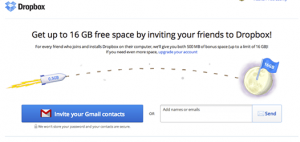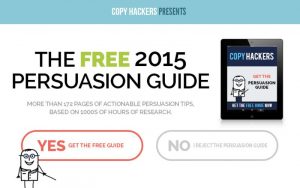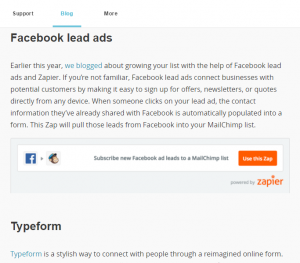It doesn’t matter what niche you’re involved in: you’re going to have competition. So it’s not enough to merely drive visitors to your website. You also need to get your visitors to engage with your content, offers, and other information, with the ultimate goal being to have them convert.
So how can you make your website more engaging, your content more shareable? What psychological principles can you employ?
Using Psychology To Incentivize Sharing
Extrinsic motivation “refers to behavior that is driven by external rewards such as money, fame, grades, and praise.” And by operating with this principle in mind, you can encourage customers to share (tweet, post, pin) a recent purchase or experience by offering to give them a coupon or discount code in exchange.
Dropbox is one company that’s had success with this technique. For every new referral, the company gives extra storage space—an incentive that’s increased Dropbox’s signup rate by 60%.

Make Visitors Either Accept Or Reject Your Call-To-Action
Nick Kolenda: “Most bloggers—including me, at the moment—are letting visitors walk by undeterred. Visitors can exit out and ignore our CTAs…
Don’t let that happen. Be the annoying vendor. Force visitors to choose an option: accept or reject (with an explicit consequence for rejecting).”
Check out the change Copy Hackers made to a popup on its website:

Now, visitors can’t simply ignore or click away from the CTA. And if they decide to select “no,” they are forced to deal with the consequence of not receiving the persuasion guide—a consequence that’s made abundantly clear so visitors know this choice does involve a loss.
So why is this technique effective at boosting engagement?
According to Kolenda, “If you force people to reject an option, they need to consider the benefits that they’re giving up—which triggers loss aversion. [So] they accept the offer because they don’t want to lose those benefits.”
Engage Visitors With First Person Wording
“Create your account” versus “Create my account” – the use of the word “my” in the second example indicates the first person. “My” triggers visitors to mentally interact with the CTA, feel stimulated by it, and consequently, facilitate the development of a positive attitude towards it.
Thanks to conceptual fluency, the use of the first-person “my” also helps visitors envision themselves performing the specified action, making them more likely to actually complete the task—in this case creating an account.
Michael Aagard of Unbounce.com has experienced success with this concept multiple times. On one occasion, he ran an A/B test on a PPC landing page, pinning “Start your free 30 day trial” against “Start my free 30-day trial,” and achieved an increase of 90% in the click-through rate with the first-person version.

Add Links And Suggest Next Steps
Your content should be simple and digestible, but at the same time, you want it to be informative. The best way to achieve this balance is to link to clarifying content on your website. Doing so not only prevents you from having to write out lengthy explanations each time you mention a particular topic or concept, but it also allows visitors to interact with your website more.
In the image below, notice how MailChimp highlights a blog post it previously featured on its website:

Another way to keep visitors engaged is to suggest the next steps. (Note: A “next step” doesn’t have to mean a call-to-action.) If you look at sites like Hubspot, you’ll notice that at the end of most blog posts, additional related articles are listed to keep visitors learning and engaged.
How engaging is your website? What other advice can you share about boosting visitor engagement and interaction?




